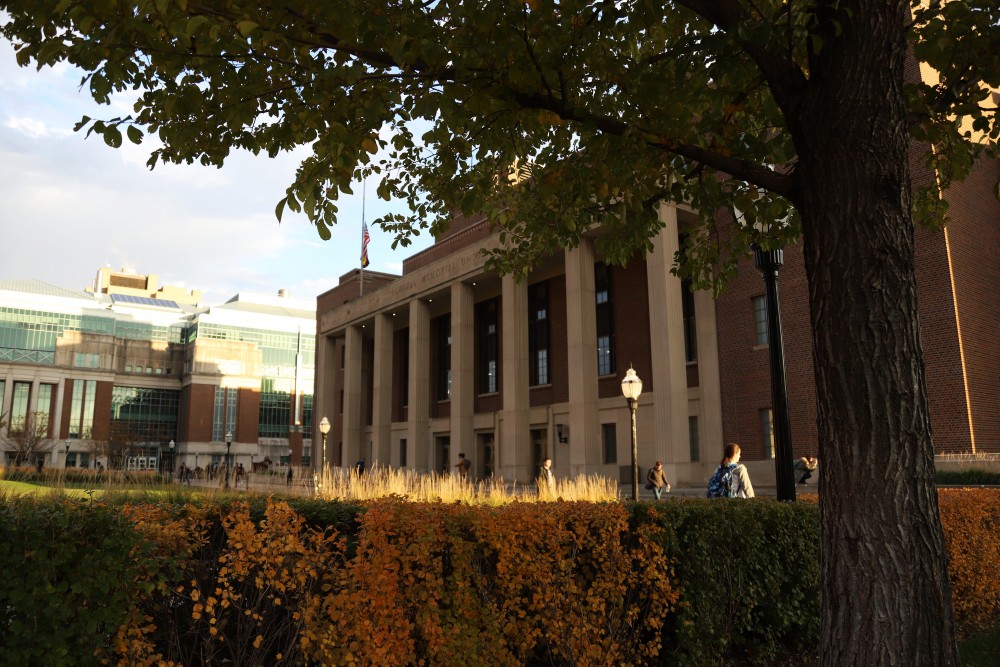A University of Minnesota task force issued recommendations that, if accepted, would be unprecedented in higher education — renaming four buildings tied to administrators who exhibited racist and anti-Semitic actions.
In a sweeping 125-page report released Wednesday, the president-appointed Task Force on Building Names and Institutional History recommended stripping four University buildings of their names: Coffman Union, Nicholson Hall, Middlebrook Hall and Coffey Hall.
“We endeavor to measure their actions against the norms and practices of their day,” says the report. “But also consider whether the values they stood for are in conflict with those of our own time.”
The report offers a history, deliberation and a reckoning with the University’s past of segregation and student surveillance. The task force describes conduct beyond what was showcased in the 2017 “A Campus Divided” exhibit, which ignited the renaming discussion.
“It is not a simple retrospective view from where we stand in 2019,” said Riv-Ellen Prell, who worked on the exhibit and advised the task force. “It’s a document that really grapples with one of the major issues in America today — memory. It takes up very important questions of the complexity of honoring history.”
Complicated legacies
Comprising University historians and professors, the task force documented tensions between preservation and change.
“Monuments and buildings do not … embody or represent history except in a simplified manner,” the report says. “Such forms of commemoration often minimize or obscure the complexities, nuances and counter-perspectives to that simplified history.”
The report acknowledges controversial administrators’ positive impacts, like former comptroller William Middlebrook’s efforts to make the University more affordable. But it’s also transparent about other impacts, like when he refused to add discrimination protections for University land in 1959, despite requests by the NAACP.
Former Dean of Student Affairs Edward Nicholson tracked the movements of Jewish students to further the political goals of a Republican lawmaker in hopes of influencing the University’s regent-selection process.
The report says Nicholson’s legacy must include his personal bigotry and violations of academic freedom, due process and free speech.
Ultimately, the task force concluded that their conduct was excessive, even for the time. The task force pointed to former president Guy Stanton Ford, who ended segregation in student housing in 1937 until his successor, Walter Coffey, reversed his policies.
“You’re able to really understand the line of thinking,” said graduate student Emma Dunn, who co-authored a Minnesota Student Association resolution calling for administration to rename Coffman Union.
Coffman hosts nine of the University’s cultural centers on its second floor. But its namesake, former President Lotus Coffman, supported eugenics and enforced segregation in student housing.
The report cited a pamphlet that quoted Coffman as saying, “It is my opinion that the great hope for the race lies in the intensive study of eugenics applied to human families.”
Chloe Williams, a senior who started a petition to rename Coffman Union that gathered nearly 5,000 signatures last year, said she was ecstatic to read the report.
“This shows a level of care and compassion to these students on the second floor,” she said. “I think it’s saying a lot.”
Moving forward on renamings
The process has been one of the longest of its kind in higher education, and it’s not over yet.
President Kaler and Executive Vice President and Provost Karen Hanson will use the report’s contents to issue their own recommendations to the Board of Regents in March. The Board will ultimately vote on whether the buildings — and which buildings — will be renamed.
“The thoroughness of the Task Force throughout this process has been exemplary,” said President Kaler and Provost Hanson in a joint statement. “Their comprehensive, extensively researched report and thoughtful analysis provide us with the information and context we need.”
Dunn said she’s hopeful the regents will come to the same conclusions the task force did. “We can all follow why these conclusions are grounded in what the University represents,” she said.
The report recommends exhibits be installed in each of the buildings, whether they’re renamed or not, documenting the complex history of their namesake. It also calls on the University to permanently install the “A Campus Divided” exhibit in the newly renamed student union.
President Kaler and Provost Hanson will name a permanent Advisory Committee on University History to explore the University’s history and consider future renamings, such as Willey Hall.
The report also recommends the University assess its history of discrimination against Native Americans and explore renaming possibilities that recognize the Dakota and Ojibwe heritage of the University.
“Removing names in these instances helps reveal — not conceal — history,” the report says.
Correction: A previous version of this article misstated Middlebrook’s role in housing discrimination. He refused the NAACP’s requests to add nondiscrimination language to the sales contract of University land.
















